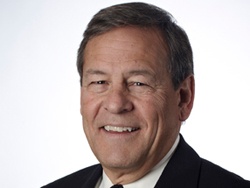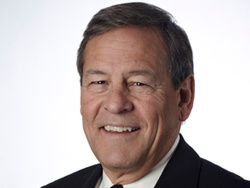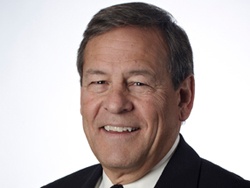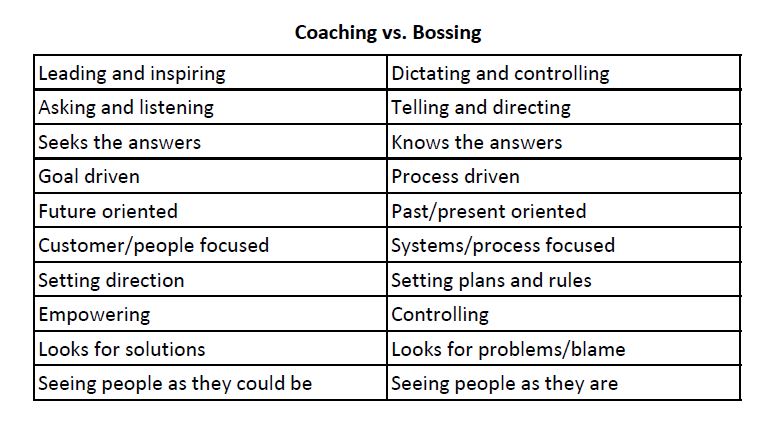


Before the twenty-first century, the term coaching was not used much in the business world. But what a difference 10 years makes! Google the words “Coaching Organization” today and you will find over 6 million matches.
In Performance Coaching, managers are shown how to help their individual contributors grow and achieve enhanced performance. Here we aim to grow the individual and gain better results. In simple terms, the aim of Coaching for Success is “growing people — getting results!”
Although this is a bit simplistic, here is a summary of the differences between being a coach and a boss:

One model you can utilize to help people become great coaches is, the 4 G Model
Strong coaches start out by identifying the “good.” They personally take the responsibility to set the values, purpose and vision of their enterprise. They set standards and ask people to abide by these standards. Excellent managers also always coach to the highest good. By doing so, they help keep their organizations from experiencing some of the ethical lapses that have dogged many in the past decade — the Enrons and World Coms and Arthur Andersens of the world. Those organizations got caught in the trap of managing by objectives rather than managing by values. Strong coaches manage by values.
Once the highest good is established, coaches need to identify the specific goals they’d like to reach — for each individual contributor, as well as for the overall department or organization.
Good coaches recognize the need of most people to be involved in setting goals, so they allow employee input into the process. This process helps build a spirit of “individual responsibility” so often missing in organizations today.
When participants believe they have a say in what is to be accomplished, they tend to be more accountable for their actions and behavior. Together with the individual contributor, good coaches come up with a set of SMART goals [Specific, Measurable, Actionable, Responsibility assigned, Time-specific] for each person as well as the department and/or organization.
After establishing the “good” and the “goals,” coaches look for gaps in performance. They start by asking the team member for their input on how things are going. They ask what successes
the team member is having, and what specific strategies led to those successes. They also ask what developmental areas their people want to work on.
Good coaches listen without interruption. They ask focused, open-ended questions to pull out as much information from the team member as possible. After listening, they present their feedback and ideas. They point out both positive gaps and negative gaps.
If there is a positive gap (the contributor is performing above the level of the good or the goals), the coach looks for ways to specifically praise the performance. If there is a negative gap (the contributor is performing below the level of good or the goals), the coach looks to redirect the performance back to good.
Effective coaches identify what kind of guidance is necessary to close the gaps in the good and the goals, and they fulfill these three roles and two special situations of an effective coach: the coach as confidant, cheerleader, corrector, challenger and facilitator.
The final G of the model is Growth. Good coaches are devoted to not only getting results, but also helping their people grow. This is usually done through the process of mentoring people
by using three fundamental coaching skills. These skills include asking good questions, listening effectively, and then giving balanced feedback.
A majority of the workshop and book, Coaching for Success, focuses on guidance and how to provide this as well as how to grow people through the fundamental coaching skills. For more information on this workshop, click here.
This information copyright Meiss Education Institute. Adapted with permission.
Don't miss out on updates and chances
to sharpen your skills with participant-centered learning.




3740 N Chestnut St #113 - Chaska, MN 55318-3053